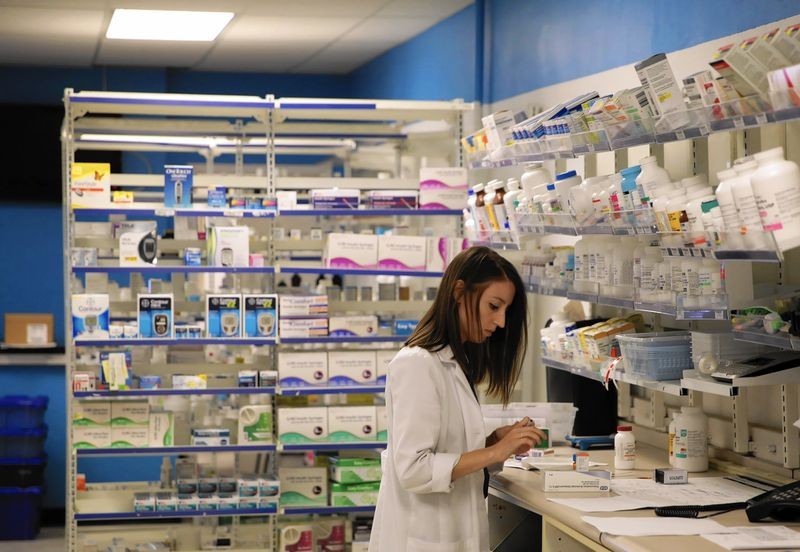
Facing shrinking margins, OrderInsite is helping its community pharmacy customers address their most expensive line item and better their bottom line by up to 6% of their annual drug costs.
“We have a system that is all engine and no brake,” remarked Stanford professor Michelle Mello. She was commenting on the state of the drug supply chain in 2019, when prices for prescription drugs jumped an average of 5.2% year-over-year, according to GoodRx. Post-pandemic, the system’s throttle has been hit and the rapid acceleration of drug prices is putting America’s independent pharmacists in a vice grip.
Facing shrinking margins, OrderInsite is helping its community pharmacy customers address their most expensive line item and better their bottom line by up to 6% of their annual drug costs.
Cost
Prescription drugs and labor account for the majority of costs for independent pharmacies. With labor markets tight right now, pharmacies are looking to aggressively lower their drug costs any way they can. This leads to always looking for the lowest drug price, whether it’s provided by their primary wholesaler or daily, one-off low cost offerings. While these one-time deals may be appealing, most pharmacies don’t realize the impact that buying outside their primary supplier is having on their overall costs.
Why is it hard to understand the impact of a single purchase on a pharmacy’s overall cost? Today’s supplier agreements are complex and designed to incentivize pharmacies to buy within their agreements. This is further amplified by the fact that most independent pharmacies don’t have the time or internal resources to properly analyze the impact each purchase makes on their overall cost of brands or their rebate.
OrderInsite helps pharmacies analyze their supplier agreements so that they can understand the impact of each purchase on their overall costs. Typical supplier agreements have several incentives that affect drug pricing: generic compliance ratios (GCR) that affect rebates and brand discounts, volume-based discounts, additional incentives on specific contract items, and payment terms. Keeping up with all of this is complex and requires managing multiple concurrent variables within one model, including knowing how much should be purchased to meet forecasted demand and which items should be purchased to optimize the contract. OrderInsite’s software can identify, on a daily basis, where a pharmacy is in its GCR incentives.
Forecasting reduces on-hand balances by 15 to 30%, putting cash back into pharmacies’ pockets.
The solution also takes a look at forecasted purchasing and makes suggestions on purchasing decisions that will help pharmacies optimize available discounts. For example, a pharmacy may get a one-time deal for a generic drug that is well below their primary supplier’s catalogue price, but not understand how it will affect their overall drug costs related to lost discounts. This one purchase could mean the difference between a brand discount of 15 or 20%. Further complicating this is that if a pharmacy doesn’t understand the forecasted demand for this particular drug, it may purchase more than needed, leading to expirations and write-offs. This relates to a single purchase on a single day. Given the variety and volume of drugs pharmacies need to purchase to ensure that they have what customers need, it’s easy to understand how quickly this can get out of hand.
Using historical data, forecasting and predictive analytics, OrderInsite tells pharmacies which drugs are needed and the quantities over set time periods. Forecasting reduces on-hand balances by 15 to 30%, putting cash back into pharmacies’ pockets. OrderInsite’s technology saves pharmacy labor, too. OrderInsite partner ScriptDrop, a medication delivery service, decreased administrative costs for its customer, Denver Health, by 50%.
Compliance
The competitive nature of the drug supply chain coupled with pharmacies’ need to save money wherever possible makes it seem advantageous to shop around and purchase drugs directly from manufacturers who offer the lowest price. The problem with the pharmacy-to-manufacturer transaction is that it cuts out wholesalers. Most pharmacies have agreements with a single wholesaler, and purchasing direct from manufacturers undercuts that relationship and violates the terms of their contract.
OrderInsite helps independent pharmacies comply with the agreements they have with their primary wholesaler. Wholesalers reward compliance and loyalty with better purchasing incentives, allowing pharmacies to rack up rebates. More rebates equate to dollars saved.
Automation
Using models with built-in analytics, OrderInsite tracks GCR and tells pharmacies which drugs to purchase to most effectively meet pricing tiers and qualify for rebates. These capabilities optimize purchasing by making it more intelligent and efficient, removing the labor and time-intensive process of comparing drug prices across vendors.
Free from this burdensome administrative task, pharmacists can spend more time counseling patients to help ensure the best health outcomes possible.
Let OrderInsite reduce your drug costs today. Request a demo to learn more.


